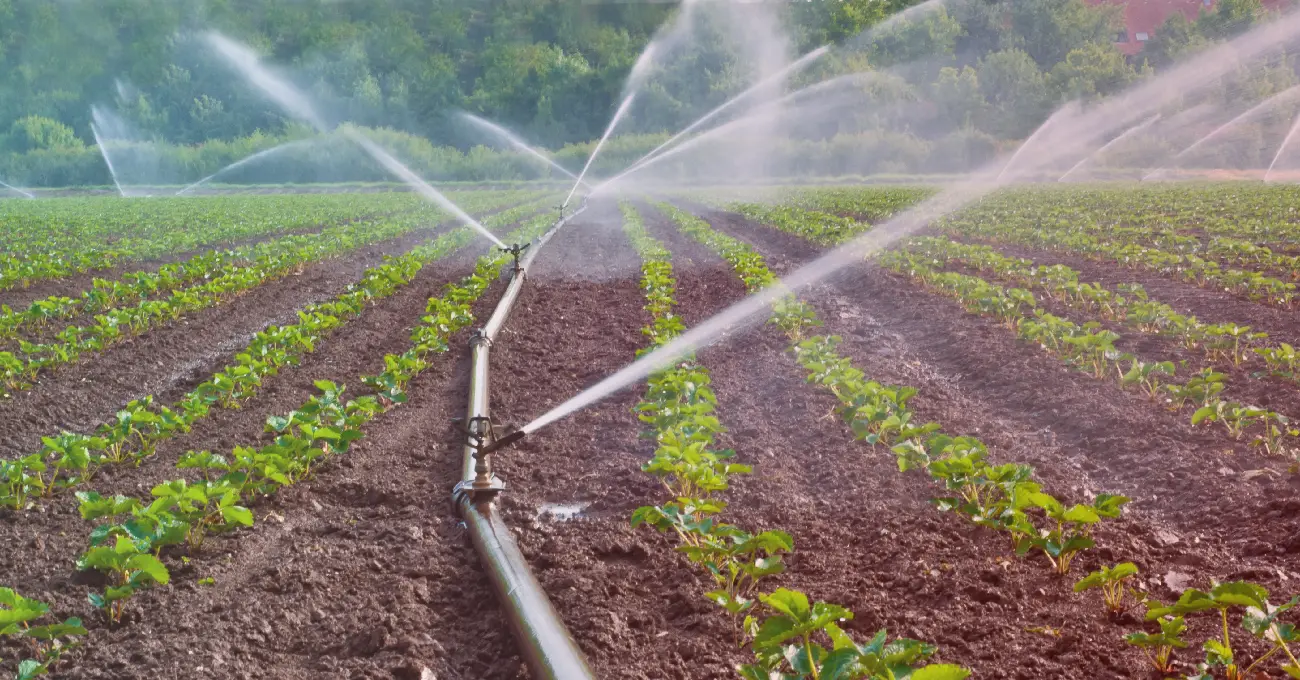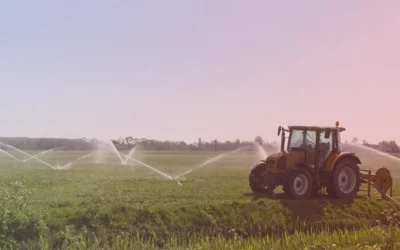Factors Influencing Evapotranspiration and How to Measure it with AI
Changes in weather patterns are making local climate elements more isolated and unpredictable, and the accurate measurement of the factors that affect evapotranspiration has never been more useful to farms of every scale.
Farmers may know that only 5% – at most – of the water that goes into crops is used for tissue production, meaning the rate of evapotranspiration is almost perfectly reflective of the rate of water lost to the atmosphere. As such, getting a handle on the factors at play and how to measure them is the key to successfully designing an intelligent irrigation system.
Measuring the rate of water loss from the soil and from the crops within it has long been an inaccurate and time-consuming process. However, the development of smart devices has come a long way to changing this.
What is evapotranspiration?
We’re going to look into the technology in more detail, but first, we should quickly clarify some definitions for context.
- Evaporation is the conversion of water from liquid to gaseous states. In agriculture, this can happen from the soil or the plant.
- Transpiration is water that is lost through the leaves of a plant. When a plant respires and photosynthesizes, it opens pores called stoma on the surface of leaves for gaseous exchange. These pores also allow water to escape, which then evaporates on the surface of the leaf. Therefore, transpiration is also an evaporative process.
- Evapotranspiration (ET) is essentially the sum of these two evaporative processes. So, the evaporation of water from the surface of the soil, added to the transpiration of water from the plants’ surface gives you a measure of evapotranspiration.
- In agriculture, the potential evapotranspiration (PET), therefore, is the maximum amount of evapotranspiration possible given a specific climatic or physical condition or combination of conditions.
- This measure is usually referenced against a specific set of circumstances such as a patch of 4” high grass, well-watered, and in direct sunlight. A situation like this is called a reference potential evapotranspiration: RET, or ET0. In some states, RET and PET are calculated at 2km resolution and the data is available to download online.
These processes are determined by physical and climatic factors, as well as the nature of the plant affected; all of which we will discuss later.
So, actual rates of evapotranspiration (ET) are based on the potential rate of evapotranspiration (PET) to predict plant health. As ET gets closer to PET, the damaging effects on the crops become more likely and irrigation needs to be implemented.
The effect of evapotranspiration
During dry periods, plants struggle with the availability of water. If the rate of evapotranspiration is higher than the rate at which a plant can draw up water, the plant will dehydrate and eventually suffer irreversible damage.
The amount of water a plant uses is almost equal to the amount of water it transpires. This is because it holds only between 0.1 and 5% of the water drawn in through its roots as part of its structural integrity.
An increase in average global surface temperatures over the past decades of climate change has led to an increase in unpredictability of the factors affecting ET as well as the likelihood that extreme cases will occur. Droughts are more common than ever and with them come worrying ratios of ET to PET in crops.
This has potentially ominous implications for agriculture and therefore must be a focus of attention.
Factors influencing evapotranspiration
There are five major factors that affect evapotranspiration. These include both climatic and physical properties of the region, plus the specific physiology of the plant involved. Here’s a description of each of them, and how they play a role.
- The Soil – Soil composition determines its water retention and thus its ET properties. High sand or gravel soils retain the least water and will lose more water to evaporation than loamy or clay soils, for example.
- The Air – One of the most obvious factors influencing evaporation is air temperature. This affects the carrying capacity of the air, as well as the energy imparted into water that contributes to its rate of phase change to vapor. As such, a higher temperature typically results in an increased rate of ET.Wind speed will also affect the rate of evaporation, as increased air movement will provide contact surfaces with more available transportation of vapor, increasing the rate of ET.
- The Sun – Solar radiation is more than just the thermal effects of the sun. Frequency, energy, and albedo all vary depending on the location and time of day, and all affect the rate of ET. These are factors that are useful to consider but difficult to measure accurately without advanced technology.
- Water – The relative humidity (RH) of the air determines how much vapor can be held in it. With high humidity, there is less absorption of new vapor and ET is reduced. Low humidity means the air can carry more vapor, thus ET is increased.Increased rainfall can increase humidity and decrease transpiration. Rain typically increases RH
- The Plant – Different plants have different adaptations to their climate. Some are more capable of retaining their water during dry spells, others transpire more rapidly. The age and health of the plant also play a role. Some will have deeper roots, allowing them to reach water for longer without rainfall or irrigation. The physiology of the plant will play a large role in the rate of ET and therefore different plants will need different irrigation schedules.
These factors change independently of one another, making it important to measure them all and understand how or when they interact in order to devise any meaningful relationship or predictions from the data. This is where modern technology really comes into play.
How to measure evapotranspiration
Traditional methods of calculating ET involve measuring the water table changes inside a well or with floatable or absorbent devices, called lysimeters. These are implanted in the soil to monitor the vertical percolation of water.
These devices can be relatively simple, are manually sampled, and need to be carefully monitored and controlled to provide accurate results; however, advancements in the field have developed modern equivalents that can relay live data automatically.
New, signal-based lysimeters, along with other controllers, can combine live data on the multiple climatic factors listed in the previous section and relay them to a central location for analysis.
With an array of localized smart devices around the farm, it’s possible to measure wind speed, air temperature, humidity, soil moisture content, solar radiation, and almost any other component of local weather.
This way, farmers can gather detailed, accurate, and real-time data to estimate ET. Devices such as wind-speed anemometers, evaporation-sensing atmometers, and solar radiation sensors – among many others – can be combined to provide a holistic assessment of the specific conditions on the farm.
Thanks to AI, advances in machine learning have led to much more intelligent analysis methods to work with these data, and, in combination with the new devices, this allows for much more rapid, actionable information specific to their location.
Services like those provided at Benchmark Labs offer a dramatic improvement in these estimates over traditional means, ultimately saving farmers water and energy by intelligently optimizing the irrigation strategies with Ai-driven data analyses.
Conclusion
The factors influencing evapotranspiration are often independently variable. This means that changes in one can counter or compound the effects of changes in another. Although measuring these factors is becoming far simpler and more cost-effective with smart tech, it still requires complex machine-learning principles to make use of these data.
— —
Analyzing the factors that affect evapotranspiration can thankfully now be done with AI and companies like Benchmark Labs are happy to provide that service. The result is a detailed forecast and actionable information to help dramatically reduce water expenditure at a time when it’s most critical to do so. Sign up here for more information.
Recent Posts
Benchmark Labs Launches In-Situ Evapotranspiration Forecasts
Benchmark Labs the leading provider of AI & IoT-driven weather forecasting solutions for the agriculture, energy, and insurance sectors is pleased to announce the global launch of their in-situ evapotranspiration forecasting technology. We previously talked about...
Modern Methods of Water Management in Organic Farming for 2022
[dssb_sharing_button icon_bg="#636979" _builder_version="4.16" _module_preset="default" background_color="#324155"...
How Vineyard Soil Sampling is Key to Wine Production
[dssb_sharing_button icon_bg="#636979" _builder_version="4.16" _module_preset="default" background_color="#324155"...




